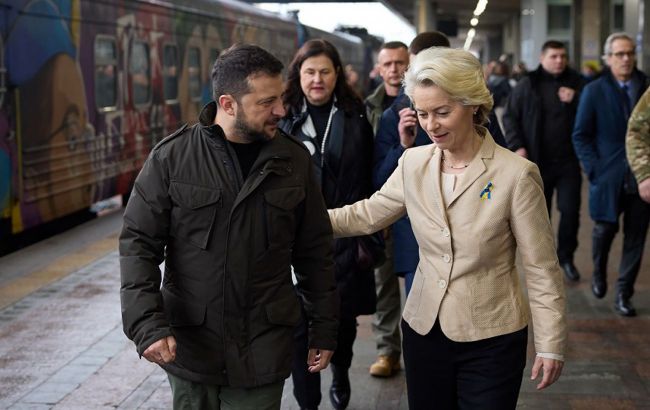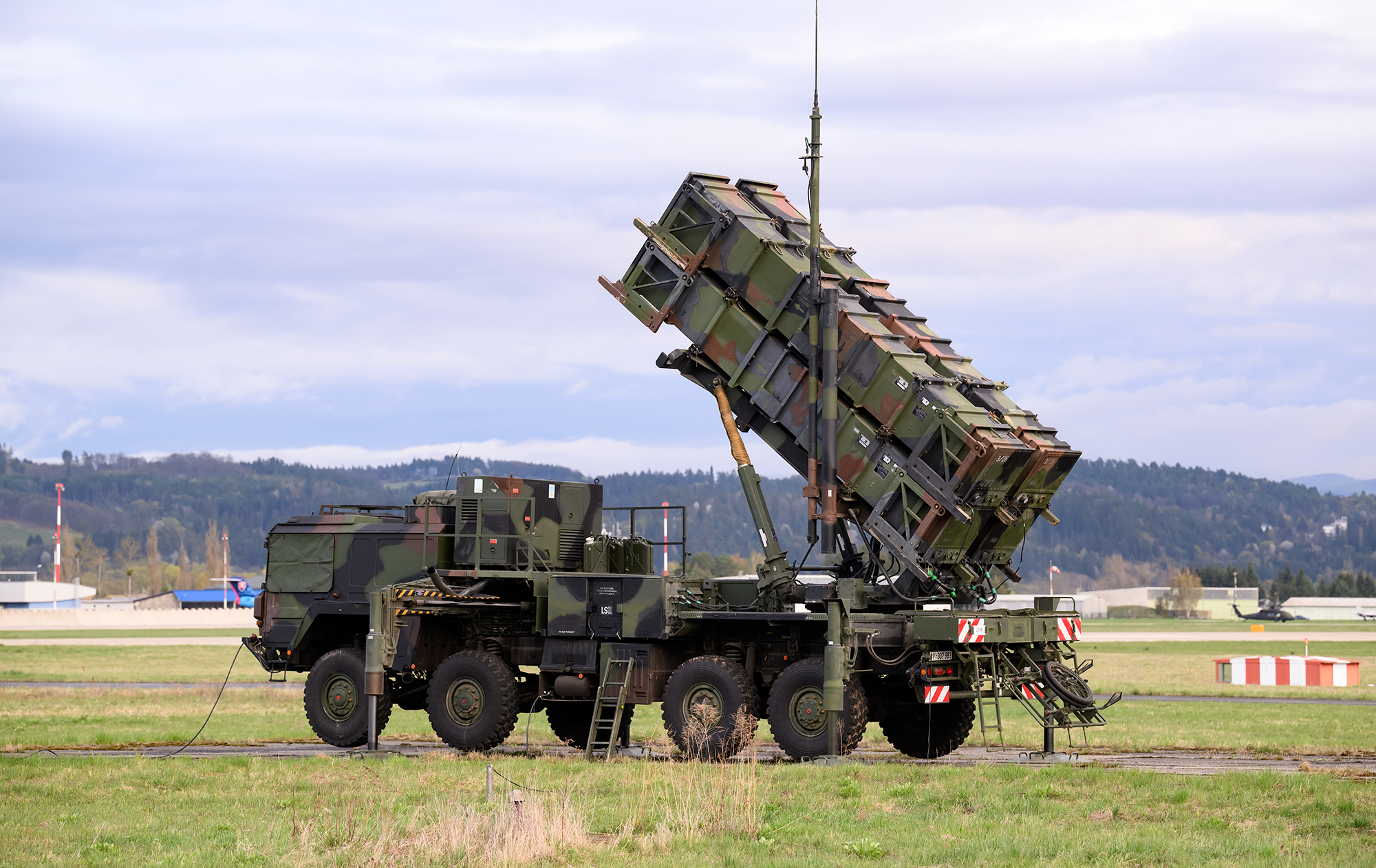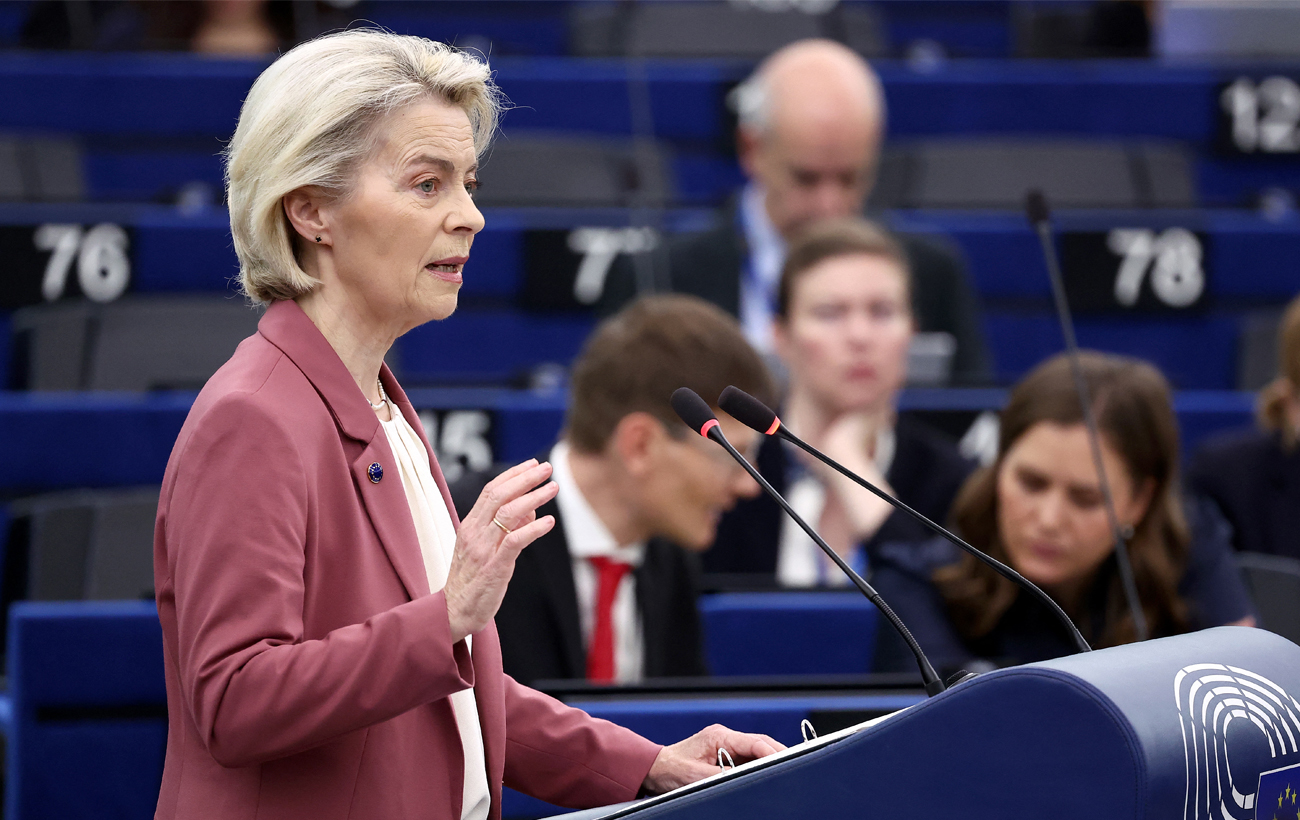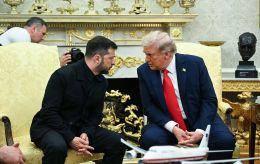EU funding for Ukraine in jeopardy? What's happening with reparations loan and political roadblocks
 President of Ukraine Volodymyr Zelenskyy and European Commission President Ursula von der Leyen (photo: GettyImages)
President of Ukraine Volodymyr Zelenskyy and European Commission President Ursula von der Leyen (photo: GettyImages)
The European Council's decision to grant Ukraine a reparations loan has been postponed until December 18. However, it remains unclear whether this decision can be made before the end of the year. RBC-Ukraine analyzes why the EU loan is important for Ukraine, and what awaits the country without it.
Key questions:
- How will the cash gap in the first quarter be covered?
- What is the connection between the peace agreements and the decision on the reparations loan?
- Why is the head of the IMF not going to Ukraine?
- Should we expect the EU to grant the loan on December 18?
Ukraine needs up to $45 billion in external financing next year. It plans to obtain this money through international support from partner countries, the IMF, and the European Union.
Since the end of 2024, the EU has already transferred €35 billion in interest from frozen Russian assets to Ukraine under the ERA program. The next step is to use the assets themselves. To this end, a reparations loan mechanism was developed last year. This is a loan of around €140 billion secured by frozen Russian funds.
Ukraine will need up to $120 billion for defense next year, and only half of this can be covered by domestic revenues.
In other words, the issue of external aid next year will be even more relevant than this year. But as of today, there is still no certainty that this aid will be provided.
"It will be difficult until April, and then... There will be a reparations loan." This is how one of Ukraine's senior government officials commented in early November on the prospect of Ukraine receiving European support from frozen Russian assets.
In order for the loan to be received on time, i.e., in April, the EU must decide by the end of this year.
Hope for such a scenario in Ukraine remains. "By the end of the year, we expect the EU to decide on a reparations loan. Ukraine is currently working (with the EU - ed.) on financial mechanisms for using the funds," Deputy Head of the Ukraine's President Office Iryna Mudra said recently.
However, there is still not enough optimism about this in the EU itself. Therefore, alternative options are already being considered there. And this is, although a month ago, a loan secured by frozen Russian assets — the so-called reparations loan — was practically the only instrument of financial support for Ukraine for the next two years.
The loan funds are to be used in 2026-2027 for Ukraine's military needs, in particular for the purchase of weapons, and to cover state budget expenditures.
In general, according to RBC-Ukraine sources in the government, Ukraine expects to receive €100 billion from this loan in 2026. About a third of the amount is to be allocated to the budget. The rest will be used for military expenses, in particular for the purchase of Patriot air defense systems. If the decision is delayed, it will directly affect the combat capability of the Ukrainian army.
 Patriot air defense system (photo: GettyImages)
Patriot air defense system (photo: GettyImages)
Why alternative options needed
The European Council planned to adopt a decision on a reparations loan for Ukraine on October 23. However, consideration of the issue was postponed because Belgium, where Russian funds are held in the Euroclear depository, refused to support the loan. And it does not want to change its position yet.
Belgium fears that if Russia suddenly demands the return of the funds, it will be left to bear the brunt of the EU's decision alone. It wants to share the responsibility among all members of the union.
The next meeting of the European Council, where the issue of granting the loan will be raised again, will take place on December 18. There is still hope for a positive decision, but it is practically unfounded and remains at the level of political statements.
For example, Polish Prime Minister Donald Tusk said that the discussion on the loan should be concluded as soon as possible. "The European Council will meet in December, and that should be the final deadline for a decision: yes or no. And we should not play with emotions, because Ukraine will not win this war or defend itself from Russia without financial support," the Polish Prime Minister said.
RBC-Ukraine's sources in European structures also speak of the likelihood of a decision being made on December 18. Practically all EU members, except Hungary, recognize the importance of helping Ukraine, as this could affect the whole of Europe in the long term, the source said.
At the same time, the EU is considering alternative options as a safety net. European Commission President Ursula von der Leyen has already announced two of them.
The first is to support Ukraine with grants and loans from individual EU members.
The second is to assist with EU borrowing on financial markets. In other words, the EU could take out a loan specifically for Ukraine.
"Given the urgency of the situation, the varying complexity of the options, and the need to begin payments by the second quarter of 2026, any chosen option can be designed as a transitional and time-limited one," the EC President noted.
 European Commission President Ursula von der Leyen (photo: GettyImages)
European Commission President Ursula von der Leyen (photo: GettyImages)
Hungary remains fundamentally opposed to the loan. Prime Minister Viktor Orbán has already stated that he will not support any decision until Ukraine agrees to the terms of Donald Trump's peace plan.
Peace plan doesn't add any arguments in favor of lending to Ukraine
The peace plan proposed by the US, which Kyiv and Washington have been discussing since November 24, does not increase the chances of reaching an agreement on the loan.
First, the very fact that negotiations on this issue have begun raises the question of whether the amount needed by Ukraine will change if the goal is achieved and hostilities cease soon.
So far, Ukraine says that even if peace is achieved, the costs will not decrease. "If the war stops, we will still need nearly the same amount just to replenish our reserves. This is simply to maintain our army in proper condition in case of secondary aggression from Russia," said Ukrainian Defense Minister Denys Shmyhal.
In addition, if peace is achieved in some form, it should be noted that some sanctions against Russia may be weakened or even lifted altogether. It cannot be ruled out that the lifting of sanctions will also affect the freezing of assets.
Secondly, point 14 of the plan itself stipulates that $100 billion of frozen Russian assets will go towards rebuilding Ukraine under US leadership, and 50% of the profits from these investments will go to the US. Europe will have to add another $100 billion. The initial version of the plan the frozen Russian funds will be unblocked, and other assets will be directed to a joint US-Russian fund for specific projects.
After negotiations between the Ukrainian delegation and US representatives on November 24, the plan was revised, and some of its points were removed. According to Bloomberg, item 14 concerning Russian assets was among those removed.
No one has officially confirmed whether this item has been permanently removed or whether it may be returned to the document after it has been revised.
According to the agency's sources, the issue of using frozen Russian funds will be further discussed with the EU in the context of allocating a reparations loan.
The EU has already stated that the issue of the loan has become more relevant in light of the US initiative to end the war. EU officials expressed optimism that the clause on the allocation of $100 billion from assets to US-controlled projects had been removed from the document.
IMF and reparations loan
The new IMF program and the reparations loan are not directly related. However, there is an interdependence.
This new Extended Fund Facility (EFF) program for Ukraine has already been agreed upon and provides for the allocation of $8.1 billion over four years. It was calculated based on Ukraine's financial needs, taking into account the reparations loan.
"At this stage, the IMF assumes that the loan will be approved and will begin to be disbursed in April. The Fund's mission in Kyiv last week confirmed these expectations," a source who met with IMF experts told RBC-Ukraine.
In its statement following negotiations with Ukraine, the IMF confirms that the program's approval by the Board of Directors is contingent upon clarity regarding the reparations loan.
The IMF said that the new program may be submitted for approval to the IMF Board of Directors after the completion of preliminary actions (probably referring to the adoption of the state budget for 2026 – ed.) and subject to obtaining sufficient financing guarantees from donors. In other words, if there are no loan guarantees, there will be no agreed program with the IMF, or it will be delayed. However, as an RBC-Ukraine source noted, the IMF is currently communicating with EU member states at its level to reach a positive decision on the loan.
In October, IMF Managing Director Kristalina Georgieva announced a visit to Kyiv. It was expected to take place during the Fund's mission in Kyiv – RBC-Ukraine sources even named the expected date – November 18. However, the visit has not yet been agreed upon.
.jpg) IMF Managing Director Kristalina Georgieva (photo: GettyImages)
IMF Managing Director Kristalina Georgieva (photo: GettyImages)
A source familiar with Ukraine's negotiations with creditors told the publication that Georgieva's visit has not yet taken place precisely because the issue of allocating a reparations loan has not been resolved.
"These two events are related. And now, both the IMF and the EU understand that without these two loans, Ukraine will face a difficult financial situation," the source said.
External support in first quarter may not be enough
Ukraine will need $12 billion to cover all its defense and social spending in the first quarter. Funding under the ERA program (interest on frozen assets) is practically exhausted—the last tranche of €4.1 billion was received in November. To finance the Ukraine Facility program, the Rada must pass a number of laws, but it is unlikely that deputies will be able to do so before the end of the year.
Part of the budget needs, the so-called cash gap, can be covered by the remaining funds from the current year and by transferring funding from the second and subsequent quarters of 2026 to the first. This is the opinion of financial analysts at the ICU group.
"In the first months of next year, it will be possible to use part of the external aid that will arrive this year but will not be spent in full. Also, in 2026, planned revenues—excluding the reparations loan—amount to about $20 billion. Therefore, the government will most likely discuss with our partners that the receipt of these already planned funds be shifted to a greater extent to the first quarter," ICU says in a comment to RBC-Ukraine.
Thus, analysts believe that the Ministry of Finance is unlikely to have any liquidity problems until at least April-May. "During this time, the fate of the reparations loan should be finally decided, or the EU will offer alternative ways of budget financing," ICU notes.
Oleksandr Paraschii, head of the analytical department at Concorde Capital, shares this view. However, he notes that the main problem may not be so much the financing of social spending as the financing of military expenditures.
"The budget with a $42 billion hole (the need for external financing - ed.) was drawn up with a modest $61 billion defense and security spending plan. And the declared need for such expenditures for next year is $120 billion. That is, we have a hole of $42+59 = $101 billion. Perhaps, given the optimization of revenues/expenditures, it could be slightly less - $90 billion," the expert notes. But still, the amount is huge, and without corresponding external and regular revenues, it will be impossible to cover the necessary expenses.
Parashchii considers the alternative options proposed by the EU to be neither a systemic nor a long-term solution to the problem. However, representatives of the European Union share this assessment.
Therefore, there is currently no full replacement for the reparations loan for Ukraine. In order to provide both budgetary and, above all, military support to Ukraine, the European Union needs to seek opportunities to reach an agreement within the union.
Sources in the government, international financial organizations, and the EU say that there is a chance to resolve the issue. "I think something will definitely happen in December," said one of the agency's interlocutors, noting that he was referring specifically to a decision on the allocation of a reparations loan.

